Vincent van Gogh, a Dutch post-impressionist painter, remains one of the most celebrated artists in history, known for his vibrant and emotionally charged works. His innovative use of color and dynamic brushwork revolutionized the art world, leaving a legacy that continues to captivate audiences today.
Among his extensive oeuvre, ten paintings stand out as masterpieces that epitomize his unique style and profound emotional depth. From the swirling skies of “Starry Night” to the vibrant blossoms of “Almond Blossom,” each work reflects Van Gogh’s distinctive vision and intense connection with the world around him.
Top 10 Van Gogh Paintings
These paintings not only showcase his technical brilliance but also offer a window into his turbulent mind and passionate soul. Exploring Van Gogh’s top ten paintings reveals the artist’s mastery in capturing both the beauty of nature and the complexity of human emotion.
In this article, we delve into these Van Gogh Top 10 Paintings, highlighting their significance and the artistic techniques that make them enduring symbols of Van Gogh’s genius.
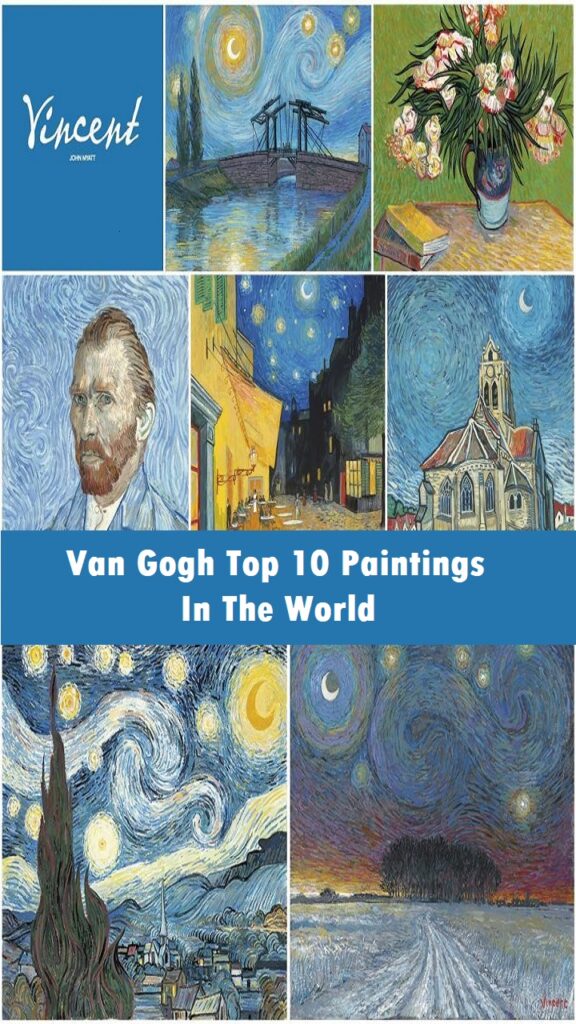
Vincent van Gogh’s work is renowned for its vibrant colors and emotional depth. Here are ten of his most celebrated paintings:
Starry Night (1889): “Starry Night” is Vincent van Gogh’s iconic masterpiece, capturing a swirling, turbulent night sky over a quiet village. Painted from his asylum room in Saint-Rémy-de-Provence, the canvas vibrates with energy and emotion. The moon and stars swirl in dynamic patterns, contrasting with the calm, orderly cypress tree in the foreground. This painting exemplifies Van Gogh’s unique style and his profound emotional expression, offering viewers a glimpse into his tumultuous inner world.
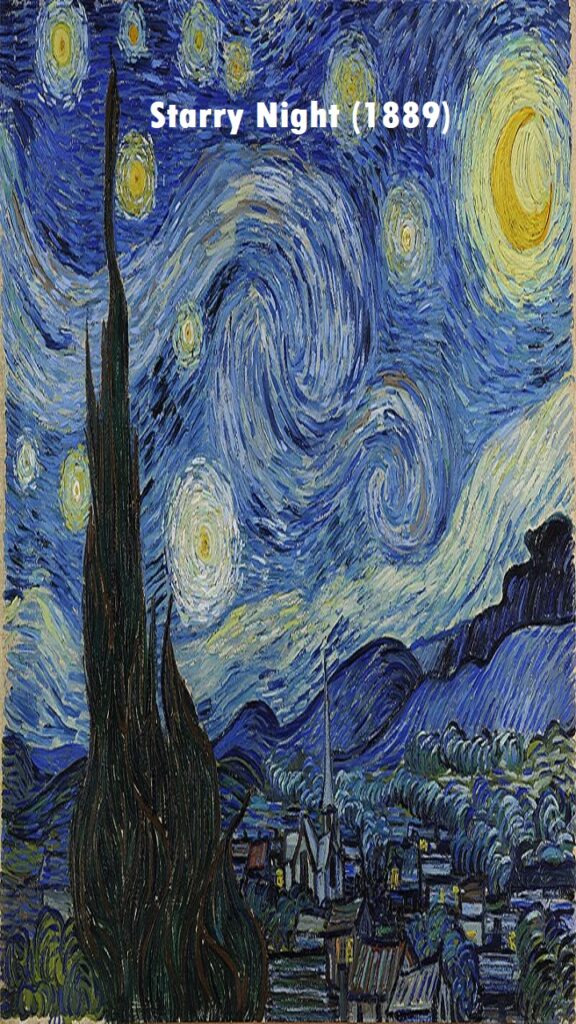
Famous Van Gogh Paintings
Sunflowers (1888): Van Gogh’s “Sunflowers” series showcases vibrant yellow blooms in various stages of life, from full bloom to wilting. Painted during his time in Arles, these works are celebrated for their bold, textured brushstrokes and luminous color palette. The sunflowers’ rich golden hues contrast against their earthy background, capturing their ephemeral beauty and Van Gogh’s fascination with nature’s cycles. The paintings are a testament to his ability to convey warmth and vibrancy through simple, everyday subjects.
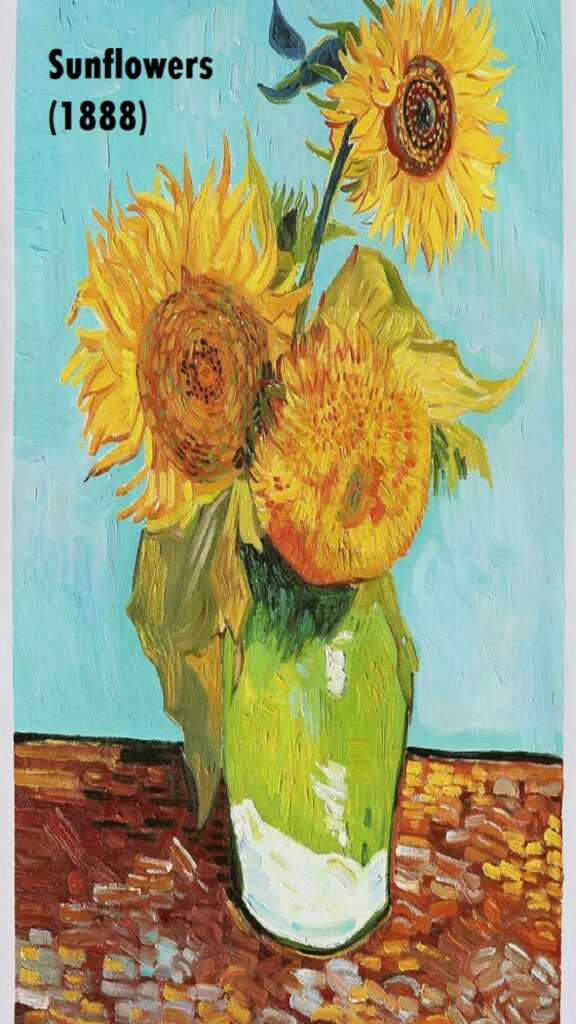
The Bedroom (1888): “The Bedroom” depicts Van Gogh’s personal space in Arles, with its distinctive colors and perspective. The painting features a modest, yet intimate room with a bed, a small table, and mismatched furniture, all rendered in bold, expressive colors. Van Gogh’s use of vibrant hues and thick brushstrokes creates a sense of warmth and tranquility, reflecting his desire for a peaceful refuge. This work is both a personal snapshot and a vivid portrayal of his unique artistic vision.
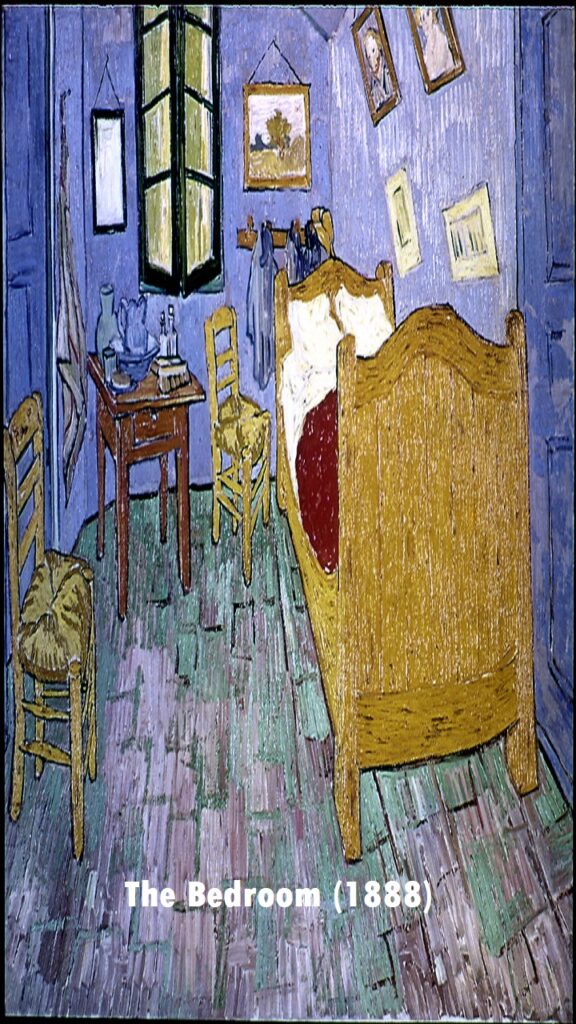
Top 10 Most Iconic Van Gogh Paintings Of All Time
Irises (1889): “Irises” is one of Van Gogh’s most celebrated floral paintings, created while he was at the Saint-Rémy-de-Provence asylum. The artwork features a dynamic arrangement of irises in a garden, rendered with Van Gogh’s characteristic swirling brushstrokes and vibrant colors. The irises’ rich purples and blues contrast with the surrounding green foliage, creating a sense of movement and vitality. This painting reflects Van Gogh’s deep appreciation for nature and his innovative approach to capturing its beauty.
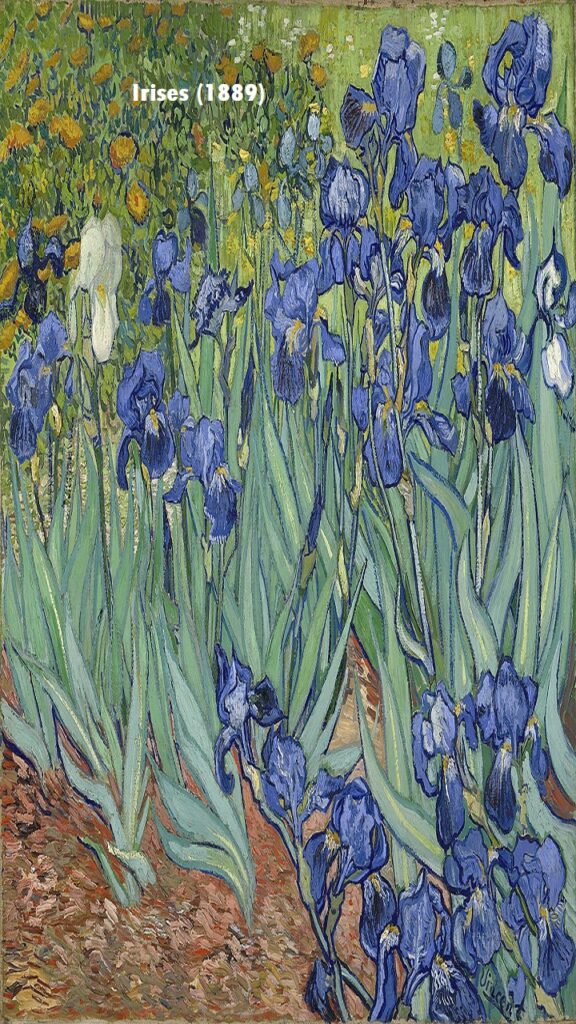
Wheatfield with Crows (1890): “Wheatfield with Crows” is a poignant and dramatic painting that features a vast, golden wheat field under a turbulent sky filled with crows. Painted shortly before Van Gogh’s death, the work’s dark, ominous clouds and foreboding crows contrast with the bright, energetic wheat field, conveying a sense of impending doom. This powerful composition is seen as a reflection of Van Gogh’s troubled state of mind and his final, intense connection with the natural world.
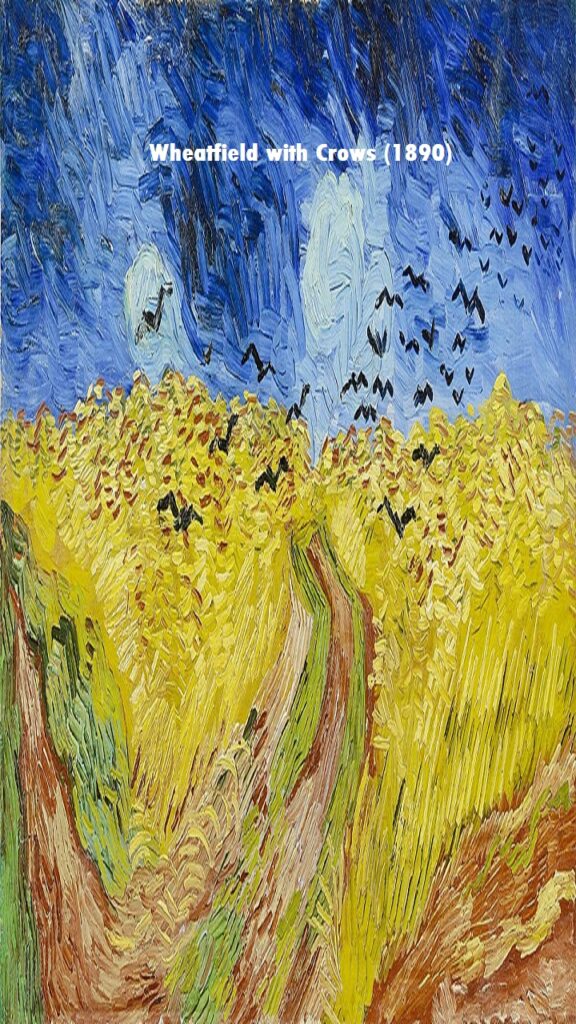
Top 10 Van Gogh Paintings
The Starry Night Over the Rhone (1888): In “The Starry Night Over the Rhone,” Van Gogh captures a serene night scene along the Rhone River in Arles. The painting features a star-filled sky reflected in the water, with gas lamps and the city lights shimmering against the tranquil river. Van Gogh’s use of vibrant blues and yellows creates a magical atmosphere, highlighting his fascination with the night sky and his ability to infuse a peaceful nocturnal scene with dynamic energy and beauty.
The Café Terrace on the Place du Forum, Arles, at Night (1888): This painting depicts a lively café terrace on a nighttime square in Arles. The scene is illuminated by soft, warm light from the café’s lamps, contrasting with the deep blues and blacks of the night sky. Van Gogh’s vibrant brushstrokes and bold color choices create a sense of warmth and social interaction, capturing the vibrant life of the street. The painting reflects his fascination with capturing the charm and energy of everyday scenes under the night sky.
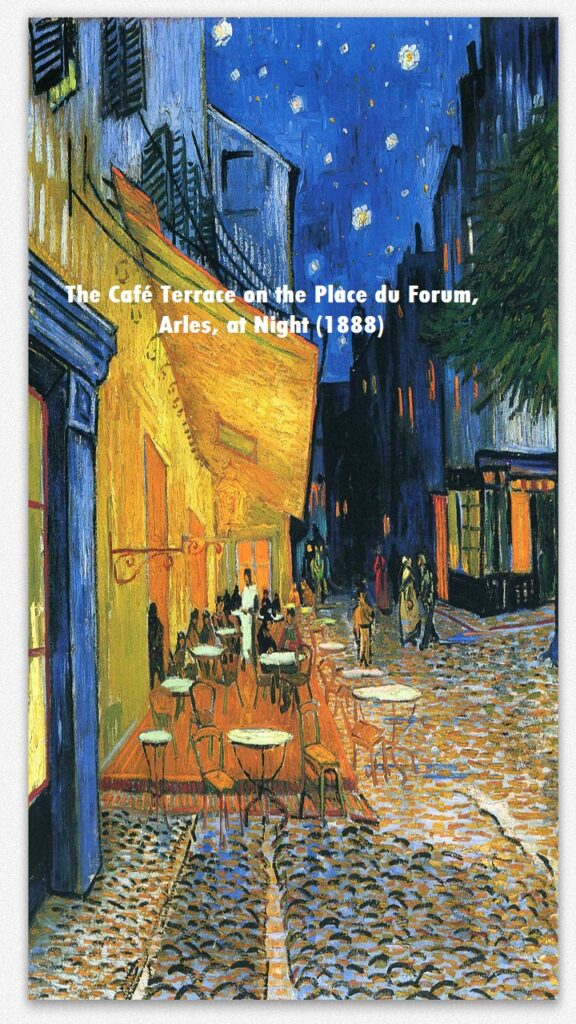
Van Gogh’s 10 Most Famous Paintings
Self-Portrait with Bandaged Ear (1889):”Self-Portrait with Bandaged Ear” depicts Van Gogh after his infamous ear injury. The artist’s somber expression and the bandage around his ear reflect his inner turmoil and emotional distress. The painting is notable for its intense colors and bold brushstrokes, capturing the raw vulnerability of Van Gogh’s personal struggle. Despite its dark subject matter, the work remains a powerful and introspective portrayal of the artist’s inner conflict and resilience.
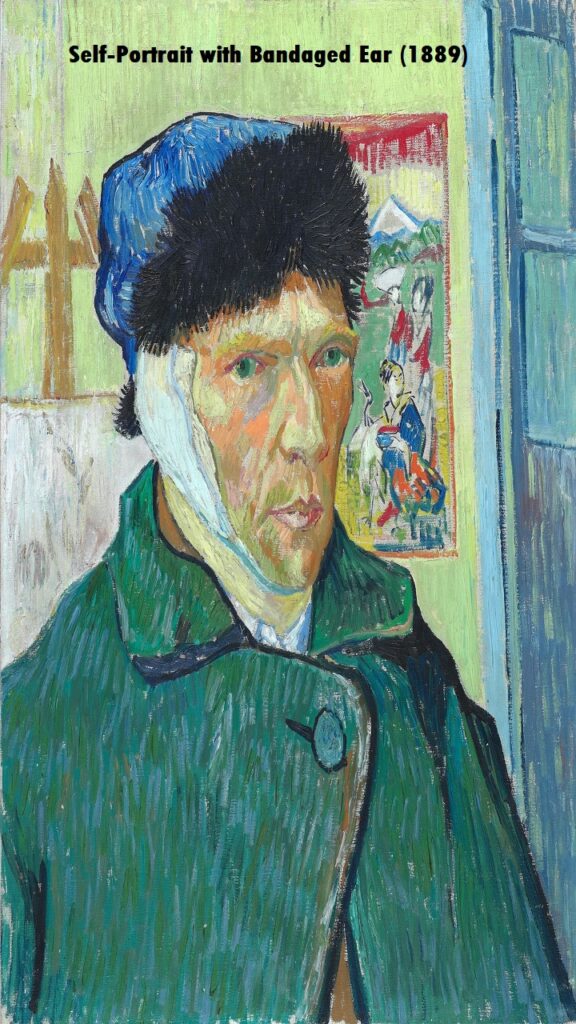
Almond Blossom (1890):”Almond Blossom” is a stunning depiction of almond tree branches in bloom, set against a serene blue sky. Van Gogh painted this work to celebrate the birth of his nephew, symbolizing new beginnings and renewal. The delicate pink and white blossoms contrast beautifully with the vibrant background, showcasing Van Gogh’s skillful use of color and texture. The painting reflects his appreciation for nature’s beauty and his ability to convey a sense of hope and renewal.
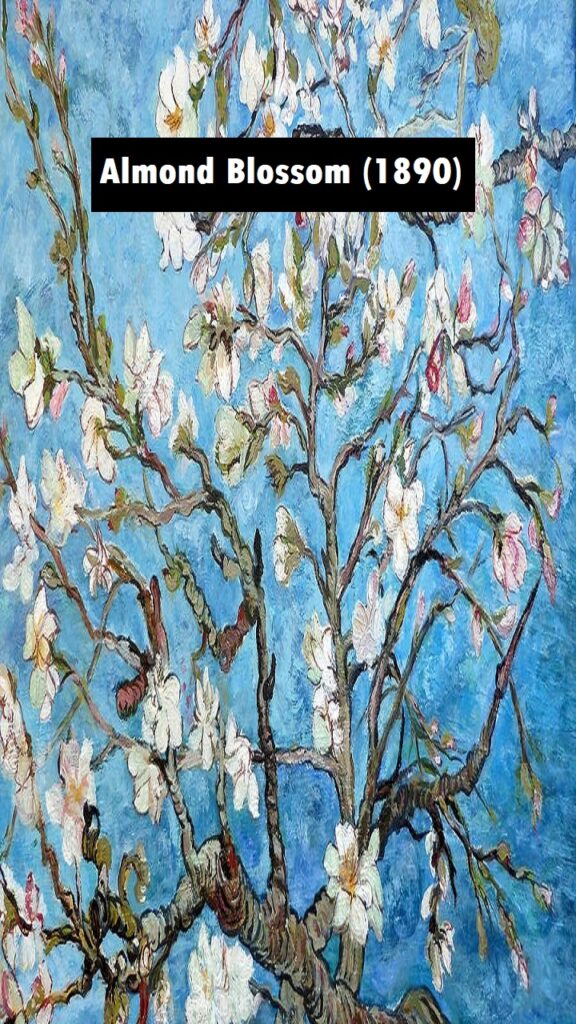
10 Best Van Gogh Paintings You Should Know About
The Sower (1888): “The Sower” features a lone figure sowing seeds in a vast wheat field, under a dramatic, swirling sky. Painted during Van Gogh’s time in Arles, the work captures the movement and rhythm of the rural landscape. The bold use of color and energetic brushstrokes convey the vitality of the scene and the labor of farming. The painting reflects Van Gogh’s fascination with rural life and his ability to infuse ordinary subjects with a sense of dynamism and emotion.
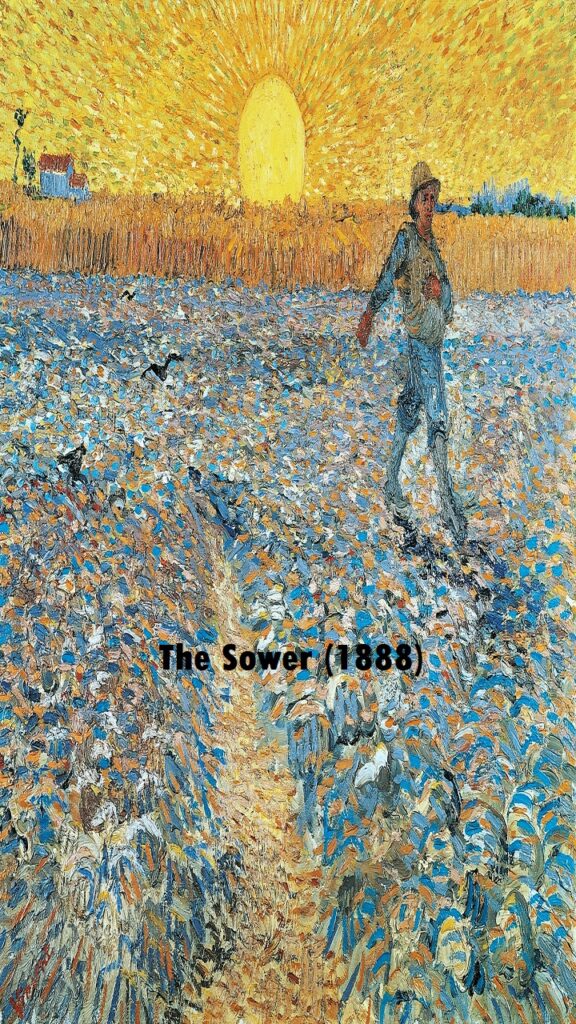
Each of these paintings highlights different aspects of Van Gogh’s artistic vision and personal experiences.
Conclusion
Vincent van Gogh’s top ten paintings offer a glimpse into the soul of one of art history’s most intriguing figures. Each piece reflects his innovative approach to color, light, and emotion, capturing the beauty and intensity of his experiences.
From the starry skies and vibrant florals to intimate self-portraits, Van Gogh’s work continues to inspire and resonate with audiences worldwide. These masterpieces not only celebrate his artistic achievements but also provide a poignant reminder of the power of art to convey the deepest aspects of human experience.
Contents





